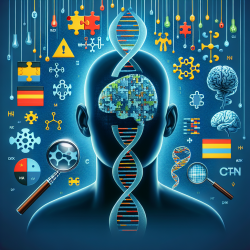Understanding the Impact of Environmental Factors on Neurodevelopment
As practitioners dedicated to fostering positive outcomes for children, it's crucial to understand the intricate relationship between environmental factors and neurodevelopment. The research article "New Thinking on Neurodevelopment" provides valuable insights into how environmental toxicants can affect the developing brain, offering a roadmap for improving our therapeutic approaches.
The Growing Concern: Neurodevelopmental Disorders
According to the Centers for Disease Control and Prevention (CDC), approximately 17% of school-age children in the United States suffer from disabilities affecting behavior, memory, or learning. These include ADHD, autism spectrum disorders, epilepsy, and more. The economic burden of these disorders is estimated to be between $81.5–167 billion annually. Understanding the potential environmental contributors to these conditions is vital for developing effective interventions.
Unraveling the Mystery: Gene-Environment Interactions
The research highlights the significance of gene-environment interactions in neurodevelopmental disorders. A child with a genetic predisposition might remain unaffected unless exposed to environmental "hits." In industrialized nations, children grow up surrounded by xenobiotic chemicals, which could amplify genetic vulnerabilities. This understanding underscores the importance of considering environmental factors in our therapeutic practices.
Neurotoxicants: A Closer Look
The article delves into specific neurotoxicants such as lead, mercury, manganese, and PCBs, which have been linked to cognitive deficits and behavioral issues. For instance, lead exposure, even at low levels, is associated with reduced IQ and attention problems. Understanding these associations can guide practitioners in identifying potential environmental risks and advocating for safer environments for children.
Implications for Practitioners
- Stay Informed: Keeping abreast of the latest research on environmental health and neurodevelopment is crucial for informed decision-making.
- Advocate for Safe Environments: Encourage schools and communities to minimize children's exposure to known neurotoxicants.
- Integrate Environmental Considerations: Consider environmental factors when assessing and planning interventions for children with neurodevelopmental disorders.
- Collaborate with Experts: Work with environmental health specialists to better understand and mitigate risks in your community.
Encouraging Further Research
The complexities of neurodevelopmental disorders necessitate ongoing research. Practitioners are encouraged to contribute to and engage with studies exploring the intricate interactions between genetics and the environment. By fostering a collaborative approach, we can enhance our understanding and improve outcomes for children.
To read the original research paper, please follow this link: New Thinking on Neurodevelopment.










